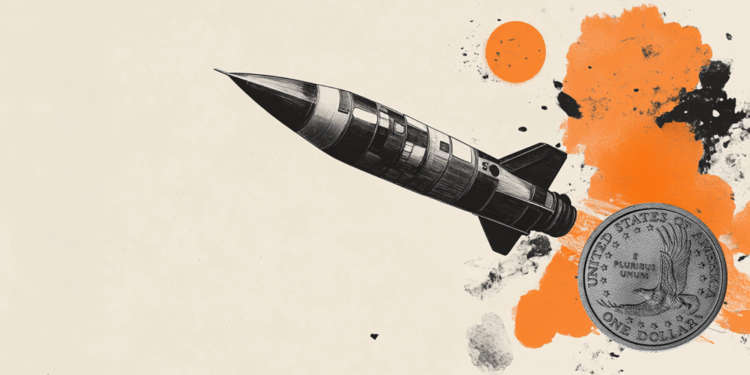- AUD/USD is showing a slight decline on Monday but holding January highs near 0.6800.
- RBA’s hawkish stance and possible rate hike add momentum to AUD.
- Australian jobs data will dictate near-term dynamics.
The Australian Dollar (AUD) experienced a minor correction against the USD in Monday’s session, falling to 0.6760. After a four-day winning streak, the AUD trimmed its gains although underlying fundamental factors point to a possible continuation in the uptrend.
The Reserve Bank of Australia (RBA), despite several signs of economic weakness in the Australian economy, is seen as being among the last central banks of G10 nations to initiate rate cuts due to persistently high inflation, a factor that could limit the AUD’s fall and extend its gains.
Daily Market Wrap: AUD could gain as jobs data could justify RBA’s hawkish stance
- On the economic data front, investors are focused on Australian employment data for June, due out on Thursday.
- The report is expected to show that 20,000 new job seekers were hired, compared with 39,700 in May.
- The unemployment rate will be in focus and if it holds steady at 4.0%, it would signal a strong labour market, fuelling expectations of further policy tightening by the Reserve Bank of Australia (RBA).
- According to recent market speculation, there is almost a 50% chance of a rate hike by the RBA in September or November.
- On the other hand, the market sees a more than 80% chance of a September cut by the Fed, depending of course on incoming data. Key speeches by Powell on Monday and other officials this week will provide further clarity.
Technical Analysis: AUD/USD holds highs, overbought indicators suggest an imminent correction
Despite Monday’s mild correction, the AUD/USD remains bullish, holding on to the highs seen since January. In parallel, the pair rose by over 1.5% in July, suggesting a strong move higher. However, the RSI and MACD indicate that it is approaching overbought territory and some exhaustion, suggesting that a potential correction is on the horizon.
The buyers’ objective remains to hold the range of 0.6760-0.6780 and possibly overcome the area of 0.6800. On the contrary, the levels of 0.6730, 0.6700 and 0.6650 are set as the support ranges in case of a correction.
The Australian Dollar
One of the most important factors for the Australian Dollar (AUD) is the level of interest rates set by the Reserve Bank of Australia (RBA). Since Australia is a resource-rich country, another key factor is the price of its largest export, iron ore. The health of the Chinese economy, its largest trading partner, is a factor, as is inflation in Australia, its growth rate and the Trade Balance. Market sentiment, i.e. whether investors are betting on riskier assets (risk-on) or seeking safe havens (risk-off), is also a factor, with risk-on being positive for the AUD.
The Reserve Bank of Australia (RBA) influences the Australian Dollar (AUD) by setting the level of interest rates that Australian banks can lend to each other. This influences the level of interest rates in the economy as a whole. The RBA’s main objective is to maintain a stable inflation rate of 2%-3% by adjusting interest rates up or down. Relatively high interest rates compared to other major central banks support the AUD, and the opposite for relatively low ones. The RBA can also use quantitative easing and tightening to influence credit conditions, with the former being negative for the AUD and the latter positive for the AUD.
China is Australia’s largest trading partner, so the health of the Chinese economy greatly influences the value of the Australian Dollar (AUD). When the Chinese economy is doing well, it buys more raw materials, goods and services from Australia, which increases demand for the AUD and drives up its value. The opposite occurs when the Chinese economy is not growing as fast as expected. Therefore, positive or negative surprises in Chinese growth data often have a direct impact on the Australian Dollar.
Iron ore is Australia’s largest export, worth $118 billion per year as of 2021 data, with China being its main destination. The price of iron ore can therefore be a driver of the Australian dollar. Typically, if the price of iron ore rises, the AUD rises as well, as aggregate demand for the currency increases. The opposite occurs when the price of iron ore falls. Higher iron ore prices also tend to lead to a higher probability of a positive trade balance for Australia, which is also positive for the AUD.
The trade balance, which is the difference between what a country earns from its exports and what it pays for its imports, is another factor that can influence the value of the Australian dollar. If Australia produces highly sought-after exports, its currency will gain value solely because of the excess demand created by foreign buyers wanting to purchase its exports versus what it spends on buying imports. Therefore, a positive net trade balance strengthens the AUD, with the opposite effect if the trade balance is negative.
Source: Fx Street
I am Joshua Winder, a senior-level journalist and editor at World Stock Market. I specialize in covering news related to the stock market and economic trends. With more than 8 years of experience in this field, I have become an expert in financial reporting.







